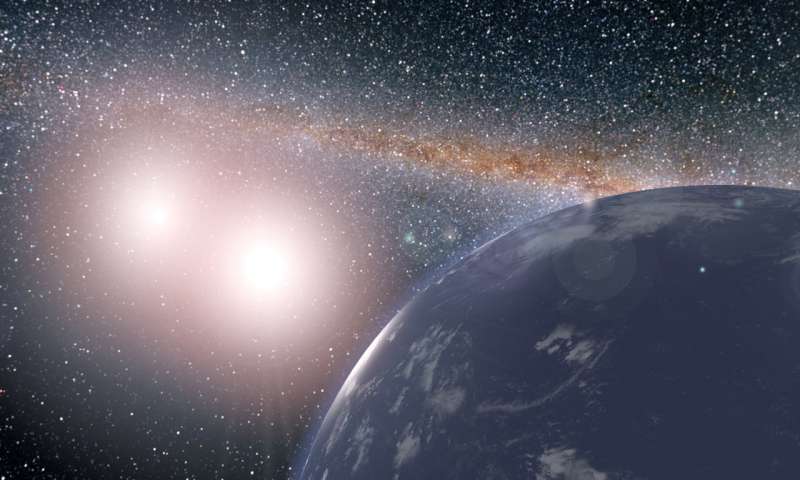Two Earth-like, Potentially Habitable Exoplanets Spotted At Just 12.5 Light Years Away

Scientists are quite sure they have discovered two exoplanets that are similar to Earth and which are potentially habitable. These are located within our galaxy, are fairly close by and are on the list of known, habitable exoplanets. One of the planets resides in the constellation of Aries. It is 12.5 light years away from us, and it is thought to be the most similar to our planet between the two recently found Earth-like exoplanets.
Scientists spotted two Earth-like exoplanets at 12.5 light years away
Mathias Zechmeister, an astrophysicist at the University of Göttingen explains: “The two planets resemble the inner planets of our Solar System. They are only slightly heavier than Earth and are located in the so-called habitable zone, where water can be present in liquid form.”
The star the two planets are orbiting was discovered in 2003 and was named Teegarden’s star. It is one of the smallest in recorded knowledge and is around ten times lighter than our Sun. It is noted as being a red dwarf that is 8 billion years old.
The method astronomers tend to use to identify exoplanetary systems is quite simple. They observe if and when the telescopes’ view on stars is blocked, with brief moments of light evading the view. This marks the orbit of a planet around the star. It is known as the transient method.
However, Teegarden would not respond well to the method in question. Scientists used the next-gen telescope CARMENES to uncover data about the new star and its system and to spot the two Earth-like, potentially habitable exoplanets. Three years of observations have produced data that were transformed into images of the distant solar system, also revealing the existence of two exoplanets, designated as Teegarden B and C.
These exoplanets are potentially habitable
Teegarden B is closest to the red dwarf star and is said to maintain temperatures between 0 and 50 degrees Celsius. Teegarden C, which orbits farther away, is similar to Mars, maintaining around -47 degrees Celsius.
According to the ESI, which stands for the Earth Similarity Index, Teegarden B has the highest score in comparison with any other exoplanet. However, this does not mean that it fully supports life, as there are other factors for that to happen. But, undoubtedly, it is the most promising one.
Some scientists are most concerned with how long the exoplanet takes to complete an orbit around the host star. Another question is how fast these Earth-like exoplanets spin around their axis. Both these factors are essential in determining if these worlds are indeed potentially habitable.
0 comments